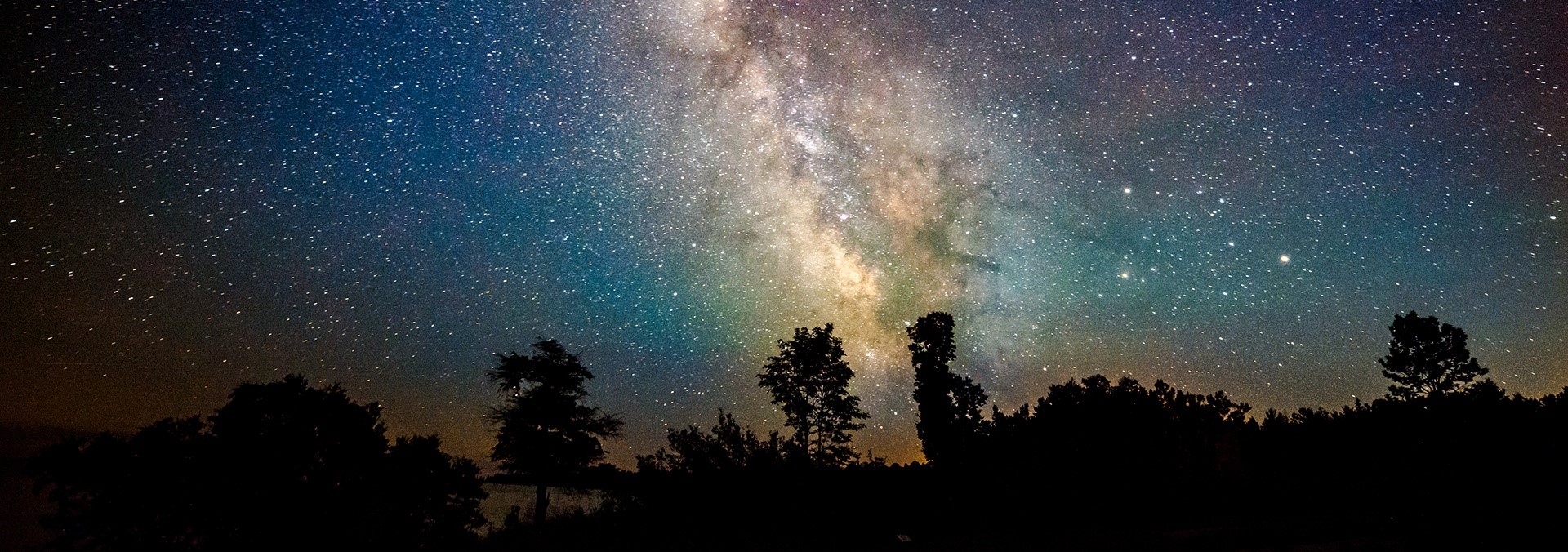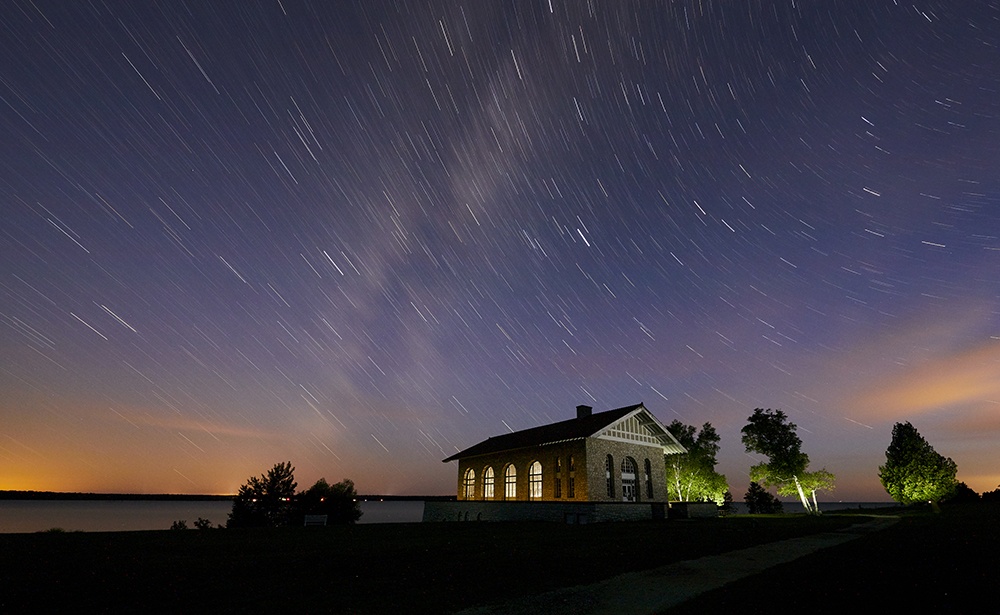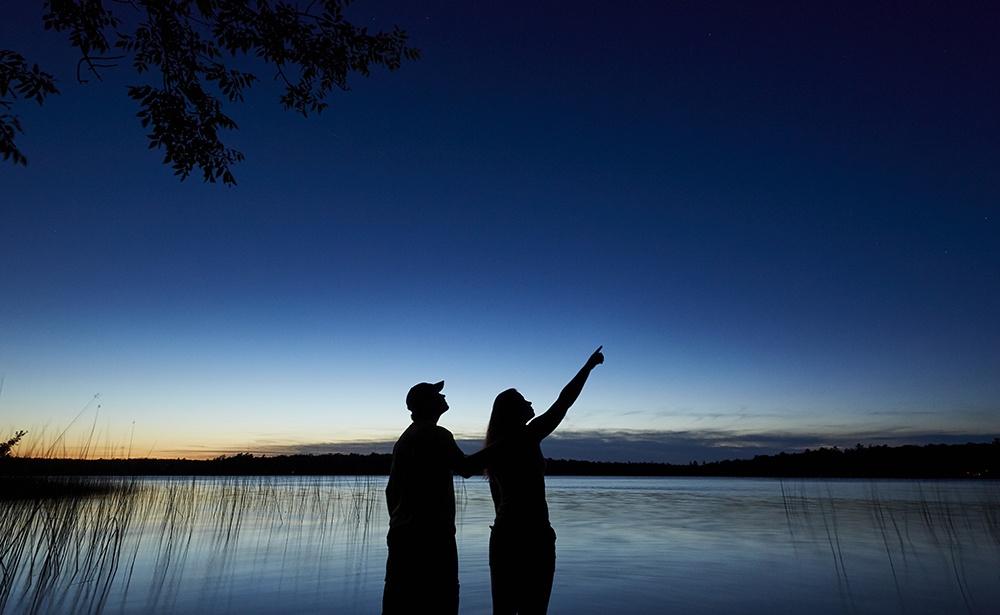
Stargazing: 300 Billion Reasons to Visit Door County
Published
Newport State Park is one of the best places to go stargazing in Wisconsin, thanks to its famously dark and light pollution-free skies. In fact, it earned the International Dark Sky designation in 2017, placing it among the top places on the planet for spying stars, constellations, the Milky Way, the Northern Lights, and more.
But this wilderness park on the northeast side on the peninsula is not the only place to explore the skies, and there are more ways to behold the beauty and mystery of our solar system than just looking up and admiring.
Where to Go Stargazing in Door County
- Newport State Park: the best-known spot on this list, Newport is a gorgeous lakeside park with dark, dark skies and hike-in campsites for enjoying them all night. Secluded campsite 16 is atop a sand dune on the beach and offers some of the most incredible night-sky views in the state.
The park also offers events where visitors can use professional telescopes, learn about the stars and skies from experts, and meet other astronomy enthusiasts (program on hold for now). - Crossroads at Big Creek: Crossroads has multiple outdoor spaces for viewing the night sky, including an Astronomy Campus, the Leif Everson Observatory, the StarGarden, and more. The facility is located outside Sturgeon Bay and also has several miles of wooded hiking trails and greenspaces for night-sky viewing.
- Campgrounds: Sure, you can spend an hour or two stargazing and feel connected to the larger world. Or, you could pack up a tent, grab some blankets and snacks, and head to a private site in the woods where you can spend the entire weekend marveling at the cosmos and channeling your inner Carl Sagan.
- Rock Island: If feeling a primitive pull toward the earth and the stars is your goal, hop a ferry (or two) and trek to Rock Island. This remote island park offers almost total solitude, silence, and darkness if you’re willing to put in the effort. Camping on the island, you’re sure to see an epic display of stars and potentially other planetary phenomena.
Be sure to check the WI Ferry schedule before venturing out.

Planetary Features To Look For
There’s definitely no guarantee, but on a clear night you have the chance to see these wonderous features in the sky.
- Aurora Borealis: Find a dark, north-facing location, such as on the west shoreline of the peninsula.
- Milky Way: Search for sights of the Milky Way in southern-facing spots, ideally during summer.
- Meteor Showers: Check the forecast for this spectacular show.
- The Moon & Moonrise: Camp out somewhere with an easterly facing shoreline along the peninsula.
- Constellations & General Astrophotography: Old reliables like the Big Dipper, Little Dipper, Orion, Taurus, and other easy-to-find constellations are even brighter when you have a totally dark sky.

Top Tips for Stargazing
Yes, ultimately, stargazing is simply going outside at night and looking up, but there are quite a few things you can do to make the experience both more special and more comfortable.
- Bring those Binoculars:The easiest and most convenient way to view a ‘magnified’ night sky is with a simple pair of hand binoculars. Look for ones with sizes such as:
- 7 x 50 (magnification: 7; objective lens diameter: 50mm)
- 8 x 56 (magnification: 8; objective lens diameter: 56mm)
- 10 x 63 (magnification: 10; objective lens diameter: 63mm)
Also look for binoculars with high-quality optics, meaning they have multi-coated, high-index lenses (Door Peninsula Astronomical Society).
- Or Rely on Your Eyes: It’s entirely possible to see many constellations with your bare eyes. Search for a dark place, at least an hour after sunset, and away from any and all lights—residences, businesses, car headlights, streetlamps, electronics, and even flashlights or headlamps.
Each time your eyes see some human-created light, it takes a while for them to readjust. If you want a light for reading or wayfinding in the dark, use a red-colored flashlight lens to prevent this. - Be Prepared: Unless you want a good crick in your neck, be prepared to lie back while gazing skyward. Plan for the situation as well as the season. Wear warm clothes in fall, snow- and wind-proof clothing in winter, and bring a blanket, outdoor sleeping pad, or other comfortable surface to lay on all times of the year.
- Know What to Look For: As seasons change on Earth and our planet spins about, different constellations come into view. All of them “rotate” (we are the ones moving, not the stars) around Polaris, the North Star, which is also known as the end of the Little Dipper’s handle. Do some research to know which constellations or phenomena to look for or pre-download a smartphone app; dozens are available and many are free.
More on the Dark Sky Designation
Sign up today!
Visit Door County virtually with monthly newsletter updates. Each issue is jam-packed with vacation ideas, special offers, recipes, festivals, events, and more.
Subscribe to the Newsletter




